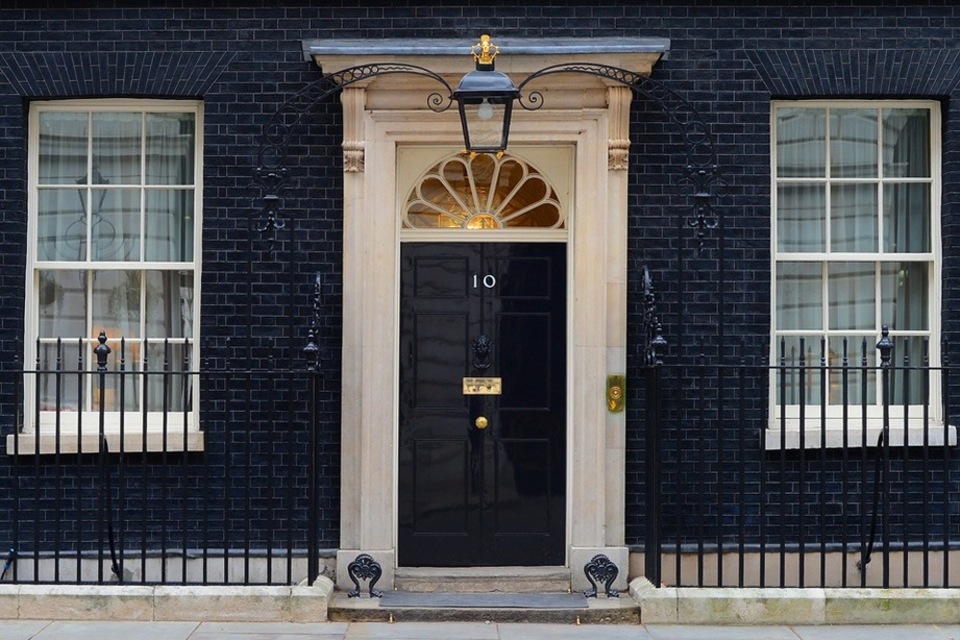
‘Skyfall’ at 10: Sam Mendes Recalls How Shutting Down the Movie Led to Its Ultimate Success
Logo text
In April 2010, Skyfall received a blessing in disguise when it was unceremoniously shut down.
With parent studio MGM spiraling toward bankruptcy at the time, Daniel Craig’s much-anticipated third outing as James Bond was put on an indefinite pause by producers Barbara Broccoli and Michael G. Wilson. MGM’s financial situation hobbled both the production and the franchise, with the latter sorely in need of a hit. The would-be blockbuster had already been in development for a year and a half — following the mixed critical and box office response to 2008’s noble misfire, Quantum of Solace. It looked like Bond’s DNR would be a lengthy one, with the press worrying it would be similar to the six-year gap between 1989’s License to Kill and the release of GoldenEye in 1995 that was brought on by legal troubles.
Related Stories
“When all this was announced, the cover story at Entertainment Weekly at the time read: ‘Is James Bond Dead?’” recalls director Sam Mendes, who tells The Hollywood Reporter on the eve of Skyfall’s 10th anniversary how challenging it seemed then for the movie to ever reach such a milestone. Mendes and his collaborators used the downtime as an opportunity to creatively resuscitate the film’s storyline. In doing so, they found themselves dealing with the same themes of resurrection in real life that Bond would struggle with as the movie rocketed toward its Nov. 9 release date in the U.S. — just in time for the franchise’s 50th anniversary. (No pressure.)
As Skyfall turns 10, Mendes reveals how he and his collaborators pulled off one of the biggest Bond movies ever — the first, and only, 007 adventure to gross $1 billion at the box office.
“People forget these things very quickly, but MGM went bankrupt and the thought among the town at that time was: ‘Oh, it’s all over. They can’t afford it, that’s the end of Bond,’” Mendes explains. For roughly 10 months, production was shut down. And while technically no one was allowed to work on the script during that time because of legal reasons, there wasn’t anything stopping Mendes and his writers — Bond veterans Neal Purvis and Robert Wade, with a rewrite from John Logan — from imagining how to address script concerns once the movie was back on its feet.
Two of those ideas were givens that the story needed to have: The death of M (played by Dame Judi Dench) and, for Craig, a villain who felt equal to Bond. It was the former that helped Mendes better realize that that loss would be the thematic fulcrum on which the rest of Bond’s journey during the Craig era would hinge.
“At a very early stage, there was a treatment — which was almost entirely ditched — but it ended with the death of M. And that was one of the things that hooked me in,” Mendes recalls. “Everyone was feeling that, with Barbara and Michael’s willingness to handle the character that way, that one decision, in a sense, changed the entire franchise. It acknowledged the passage of time, arguably for the first time ever, in the series. It acknowledged that they are mortal, that they are going to age and probably die.” (Craig’s Bond would do exactly that, another first, in 2021’s No Time to Die.)

But before Bond would meet his demise, he would face off against another foil hellbent on taking him — and M — out: Silva, played by Javier Bardem. From the jump, the No Country for Old Men Oscar winner was Mendes’ primary choice for the villain, who is a former operative of M’s that she burned and left out in the cold. Now, in Skyfall, Silva hacks MI6, blows a literal hole in the heart of their office, and leads Bond on a chase through and under London in an effort to get revenge. While that storyline sounds exciting on paper, and looks even more so on the screen, it did cause Mendes to experience difficulties while filming it.
“It was a tough shoot. Skyfall was very hard,” Mendes says. “Partly of my own making, since we elected to shoot a lot of it in London and underground, with pretty grim conditions. You have this sort of fantasy in your head about shooting a Bond movie that you’re going to spend days on some beach somewhere, but that was obviously not the case.”
But the shoot wasn’t all hardship for the director, who fondly recalls making two of his favorite scenes in the movie — both scripted during the rewrite process by Logan. The first is Skyfall’s famous “word association” scene, which was the centerpiece of the movie’s teaser trailer. Here, Bond — recovering from injuries while in the middle of rigorous physical tests to re-certify him for field duty — answers an MI-6 psychologist’s prompts with very telling, one-word responses.
Recalls Mendes: “One of the ideas [Logan and I ] threw around was: ‘Wouldn’t it be great if when they were testing Bond, they did a word association scene?’ And John went: ‘Oh, yes.’ And he wrote a fantastic scene.’”
The second of Mendes’ favorites comes later in the film, with Bond and M in the classic DB5 Aston Martin en route to Bond’s childhood home in Scotland. While pulled off on a deserted road, under a steel-gray sky, M and Bond have an exchange that Mendes calls “almost a haiku” about Bond’s past where M says Mendes’ favorite line from the film: “Orphans always make the best recruits.”
“This was a very difficult scene to nail down, to try and get those lines absolutely right,” Mendes remembers. “It was much longer in the original drafts, and I am a believer in the ‘show, don’t tell’ school of storytelling. Robert and Neil worked very hard on [the script], and a lot of it was worth keeping, and at the same time, scenes like this one — John, his ability to see what was really working and worth keeping — and, to his credit, he agreed that there was a lot — that was very important in [shaping] this scene.”
Also important to Mendes was excising one of the more problematic story threads from early drafts: A team-up between Silva and Bond.
“They teamed up in the middle of the movie, in a kind of uneasy truce. And it didn’t work because Bond works alone. Yes, he might have a woman at his side or partner with one along the way [in some of the other Bond movies], but it didn’t feel right to be paired with another alpha male. [Bond] needs someone to fight against, and those scenes lasted for as long as it took to write them. And I read it and thought: ‘No, that doesn’t work.’”

Watching the movie come together, the team got the sense that Skyfall would be as good as all involved hoped it would be, despite the dark cloud that hung over it from its earliest days. It was a realization Mendes had, ironically, at the end of production, while filming that which usually opens a Bond movie but instead closes out Skyfall: The iconic gun barrel sequence.
Recalls Mendes: “I remember doing it at the end of the shoot, and I remember feeling relaxed and happy because we’d wrapped the rest of the movie and there was music playing that wasn’t the Bond theme. And we were just having a good time and feeling like: ‘Wow, we’ve made a movie here and we all felt it was a good one.’”
Not much has ever really been documented in terms of behind-the-scenes on what goes into shooting the gun barrel sequence, but Mendes remembers Craig was focused on getting the minutiae of it right.
“It’s the first time I can recall Daniel ever coming back behind the monitor to check a shot, to see how it turned out. And obviously you understand why it’s so important [to him],” Mendes says. “You start asking yourself: ‘Where should the gun [Bond holds] be? Is it hiding behind your leg? When do you let the camera or the audience see it as you walk? Do you let them see it at all until the final moment?’”
If there’s anything Mendes would change about Skyfall, after a decade’s worth of hindsight to consider, it would be the reliance on its London locale.
“I would think twice about having Bond stand on the rooftops of Whitehall, with the Union Jack flags in the breeze, given the last 10 years of serial incompetence from [London’s] conservative government,” Mendes says with a laugh. “We look back at that time as sort of a bizarre golden era. And Skyfall was very much of its time as a movie, and very much influenced by the fact that there was a genuine national pride about the country at that point. And it was also the 50th anniversary of Bond — there was Bond jumping out of a helicopter with the queen at the Olympics that year. So I think that pride, and the excitement around that, filtered and found its way into the movie.”
Fans still celebrate the film’s narrative and financial success a decade later, as no Bond movie as yet to top it — not even Mendes’ follow-up, 2015’s Spectre, which is a movie the filmmaker seems to believe fell short of its predecessor.
“These movies are very difficult to write. Those 10 months of downtime, that’s when the script really turned around, because we had the time to go down blind alleys and try things like the [Bond/Silva team-up]. And that time was not afforded to me when we made Spectre. And you can see the difference in the script,” says Mendes. “[With Spectre], I felt there was some pressure. Certainly Barbara and Michael exerted some pressure on me and Daniel to make the next one, so that makes a big difference. People saying: ‘We want you to do it,’ and passionately wooing me to do it, was a big thing.”
But the biggest, or most important, thing to come out of the movie for Mendes is how well it was, and continues to be, received.
“The experience of shooting Skyfall was trying, but the response to it, in terms of how many people went to see it, was immensely gratifying.”







































































